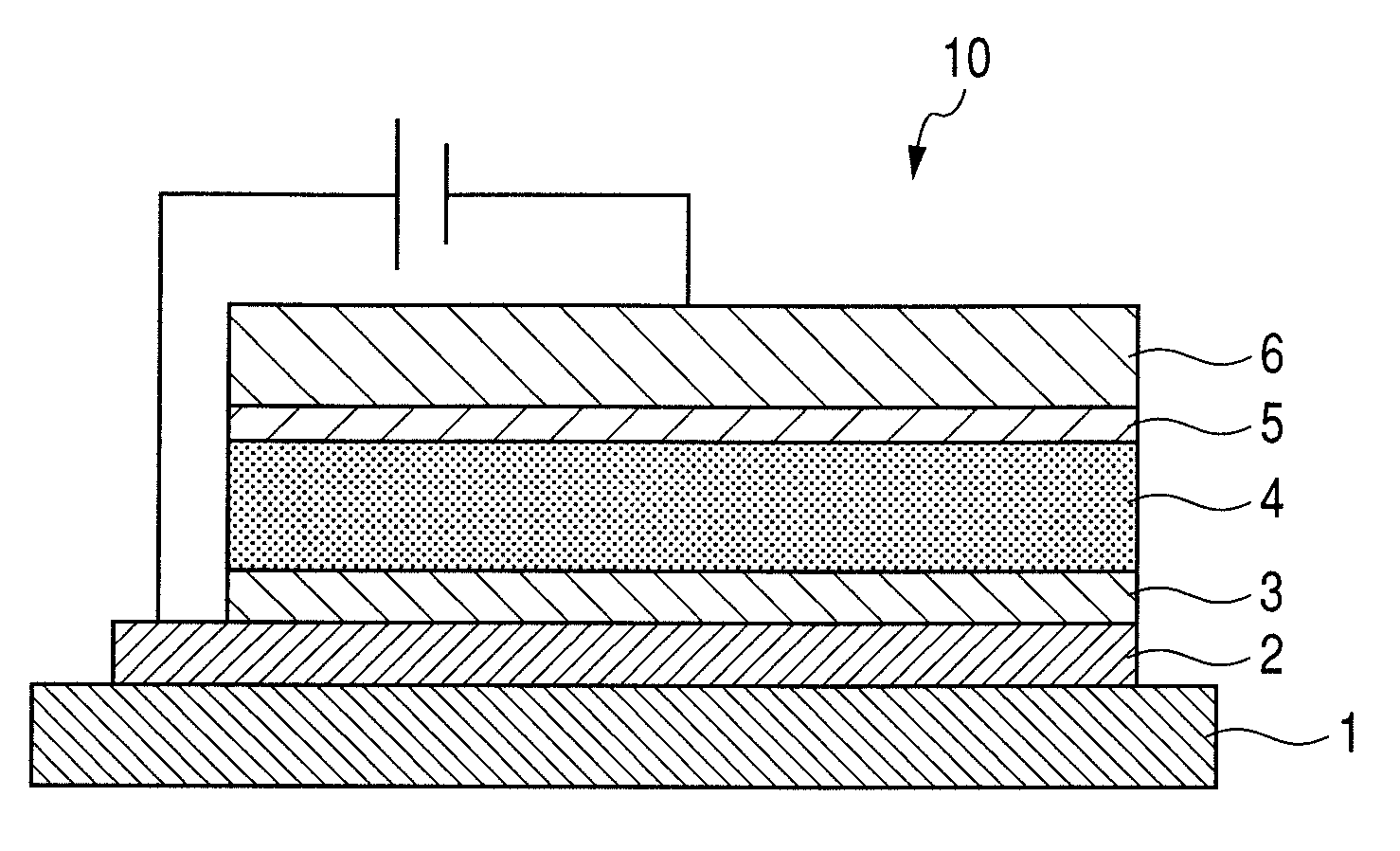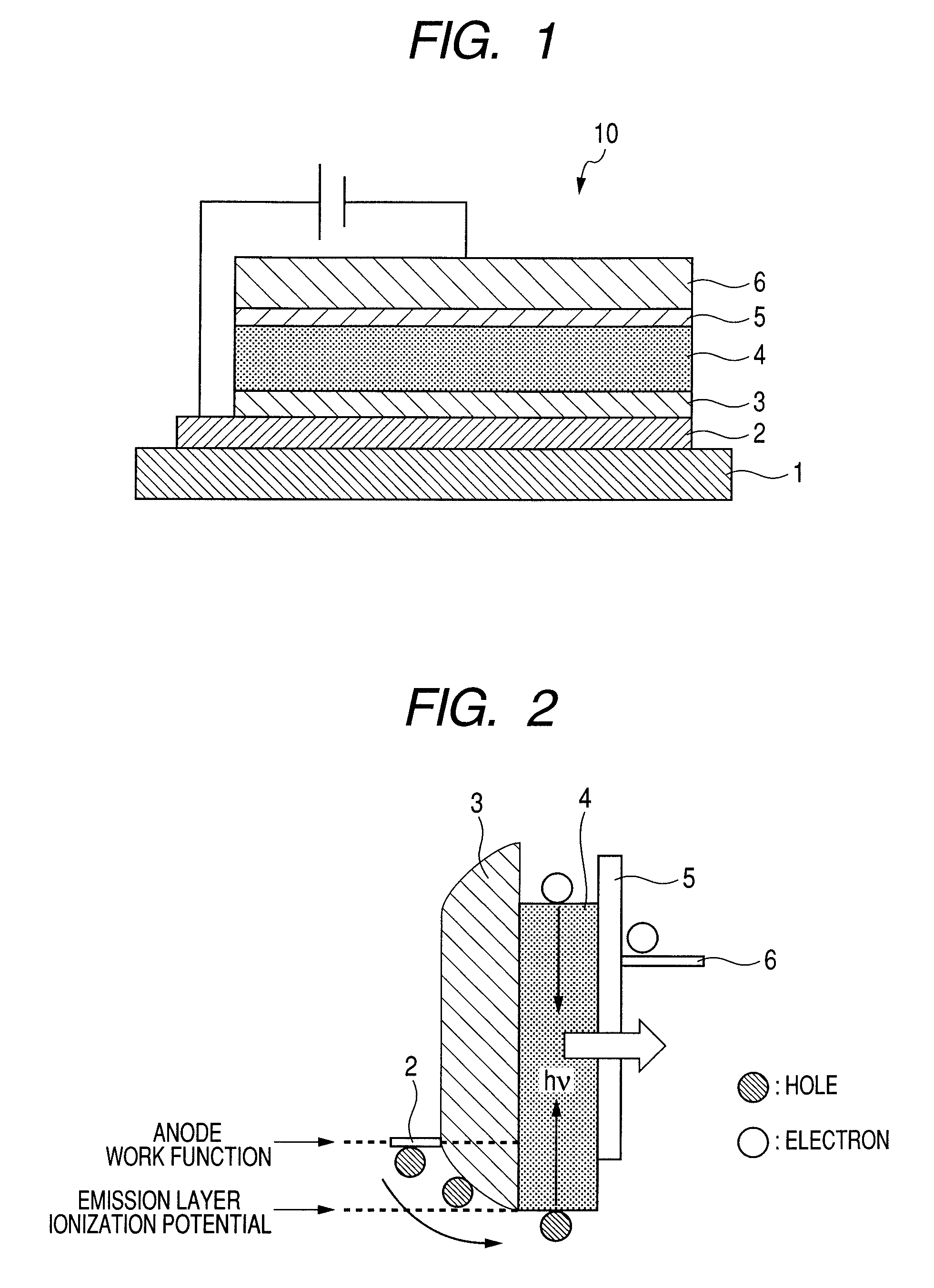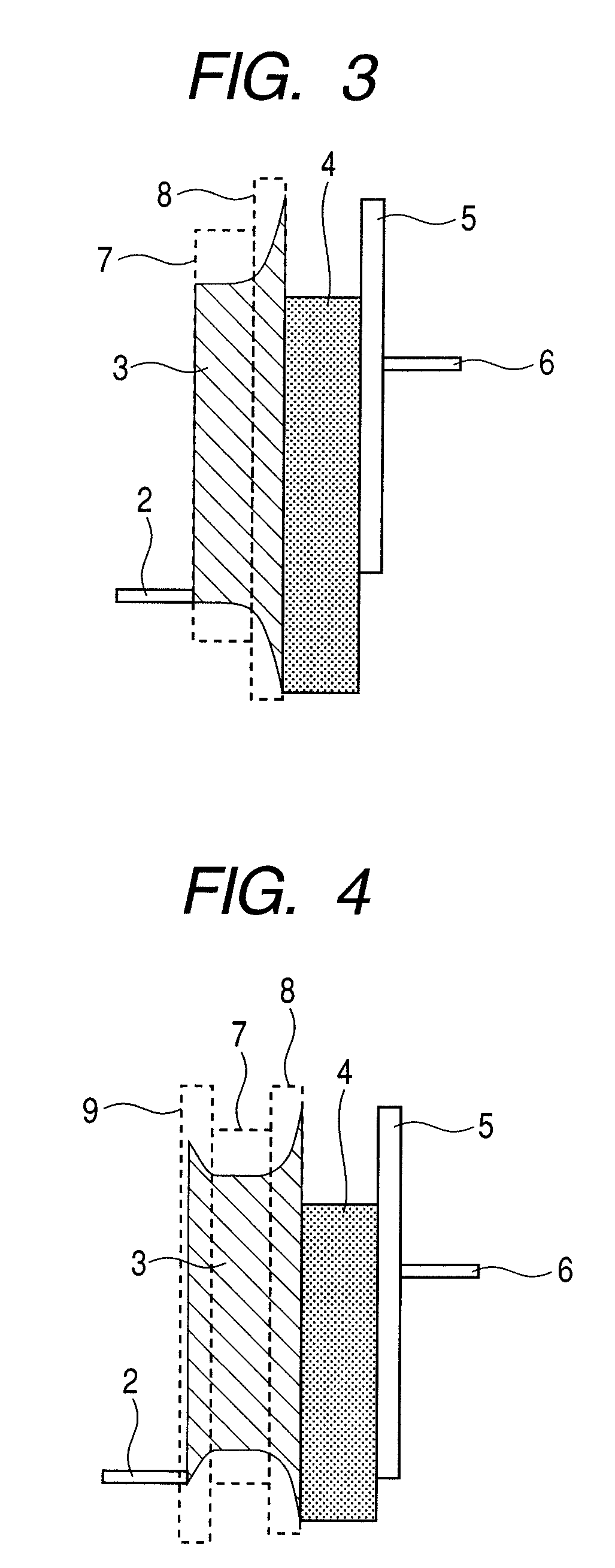Organic electroluminescent device and production method of the device, and display apparatus
a production method and electroluminescent device technology, applied in the direction of organic semiconductor devices, discharge tube luminescnet screens, natural mineral layered products, etc., can solve the problems of insufficient use for further improvement of the characteristics of the device, insufficient lifetime, and inability to provide sufficient emission intensity of the device, etc., to achieve the effect of long lifetime and high efficiency
- Summary
- Abstract
- Description
- Claims
- Application Information
AI Technical Summary
Benefits of technology
Problems solved by technology
Method used
Image
Examples
example 1
[0082]An organic electroluminescent device having a device structure illustrated in FIG. 1 was produced.
[0083]In the production of the organic electroluminescent device, the following compounds and the like were used as constituent members.[0084]Substrate 1: glass substrate[0085]Anode 2: indium tin oxide (ITO)[0086]Inorganic compound layer 3: MoOx (the oxygen content (x value) being changed continuously)[0087]Organic emission layer 4: oligofluorene compound (host) shown below and Ir(C8-piq)3 (guest) shown below
[0088][0089]Electron injection layer 5: Cs2CO3 [0090]Cathode 6: Al
[0091]Next, a specific production process for the organic electroluminescent device will be described. First, ITO was formed into a film on the glass substrate (substrate 1) by sputtering, whereby the anode 2 was formed. At this time, the anode had a film thickness of 100 nm.
[0092]Next, an MoOx thin film was formed by DC sputtering by use of Mo metal as a target, whereby the inorganic compound layer 3 was formed...
example 2
[0096]A device was produced by following the same procedure as in Example 1 with the exception that an electron-blocking layer was further provided between the organic emission layer and the inorganic compound layer by a below-mentioned method.
[0097]In this example, polyvinyl carbazole (PVK) was employed as a constituent material for the electron-blocking layer. In this example, the electron-blocking layer was formed by applying a 1.0-wt % solution of PVK in chlorobenzene by spin coating at 1,000 rpm. At this time, the electron-blocking layer had a film thickness of about 30 nm.
[0098]The resultant device was evaluated in the same manner as in Example 1. As a result, when a DC voltage of 10 V was applied to the device, a current flowed in the device. At this time, the current density was 32 mA / cm2, and the device was observed to emit red light at a luminance of 400 cd / m2.
[0099]Comparing this example with Example 1, the additional provision of the electron-blocking layer (PVK layer) w...
PUM
| Property | Measurement | Unit |
|---|---|---|
| ionization potential | aaaaa | aaaaa |
| ionization potential | aaaaa | aaaaa |
| conductivity | aaaaa | aaaaa |
Abstract
Description
Claims
Application Information
 Login to View More
Login to View More - R&D
- Intellectual Property
- Life Sciences
- Materials
- Tech Scout
- Unparalleled Data Quality
- Higher Quality Content
- 60% Fewer Hallucinations
Browse by: Latest US Patents, China's latest patents, Technical Efficacy Thesaurus, Application Domain, Technology Topic, Popular Technical Reports.
© 2025 PatSnap. All rights reserved.Legal|Privacy policy|Modern Slavery Act Transparency Statement|Sitemap|About US| Contact US: help@patsnap.com



